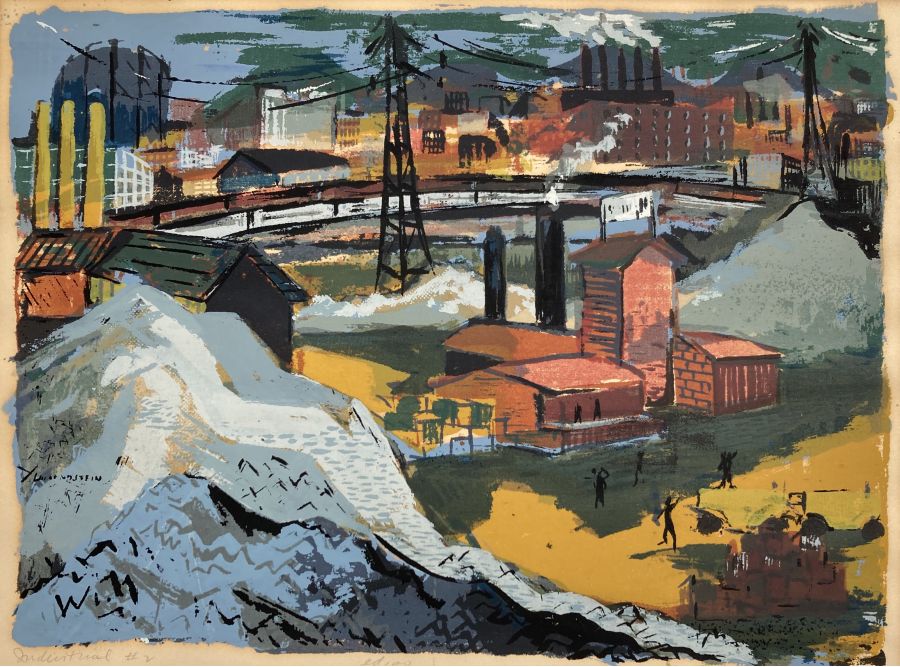MORTON DIMONDSON ((1920 - 2000)
INDUSTRIAL # 2, 1947
Serigraph. image, 11 1/4 x 15 1/2 inches Sheet 15 x 21 inches. Signed and titled on pencil. Mat burn surrounding the image in the margins not affecting image. Wide margins, Tape on the verso edge along with stray printing ink.
Very nice serigraph in the WPA tradition. Morton Dimondstein's serigraphs are rare. There is a similar print titled "Industrial # 1", same size, dated 1948, in the National Gallery of Art from the Dave & Reba Williams Collection of Serigraphy. That is the the only other similar image located. Serigraphy (Silkscreen) was first used for fine art purposes during the WPA. Although this print is slightly later than that, it harkens back to those images, Dimondstein went on the produce very fine color woodcuts.
The following obituary appeared in the Los Angeles Times on December 7, 2000:
Morton Dimondstein, 80, Los Angeles artist noted for woodcuts in the Mexican realist tradition who also was a collector and curator of African art. Dimondstein grew up in New York City, where he attended the American Artists School and the Art Students League. After serving in the infantry during World War II, he moved to Los Angeles and studied at the Otis Art Institute. Influenced by the Mexican muralist tradition, he lived in Mexico City for several years and produced woodcuts that were praised by the great Mexican painter and muralist David Alfaro Siqueiros. Dimondstein also was a sculptor whose work was called “unpretentious . . . honest, handcrafted” by a Los Angeles Times critic. His paintings and sculptures appeared in many galleries and museums, most recently the Jan Baum Gallery in Los Angeles. He also was prominent as a collector and curator of African art and founded Dimondstein Tribal Arts in 1964 to showcase African tribal art he had collected on travels throughout Europe and Africa since the 1950s. He helped organize the first major U.S. shows of tribal art from the Benue Valley in Nigeria and of Betak art from Sumatra. On Nov. 27 in Los Angeles after a long battle with Parkinson’s disease.



